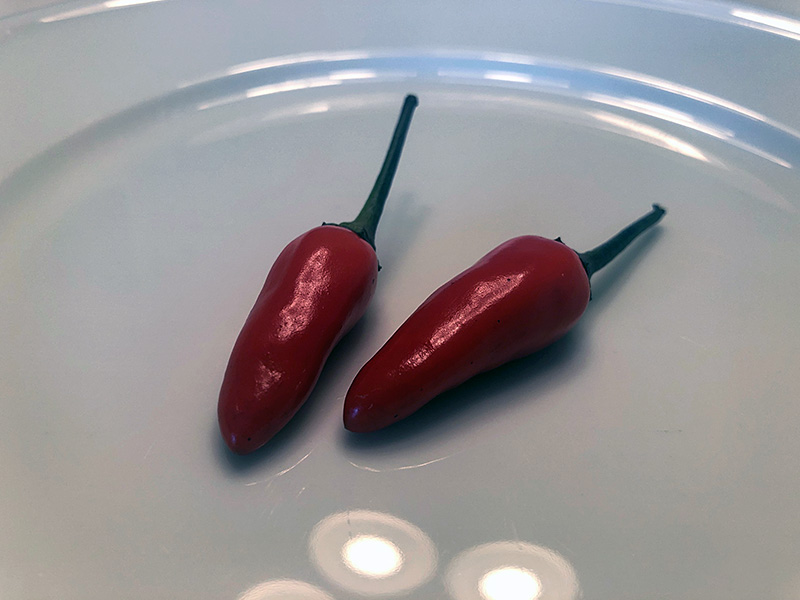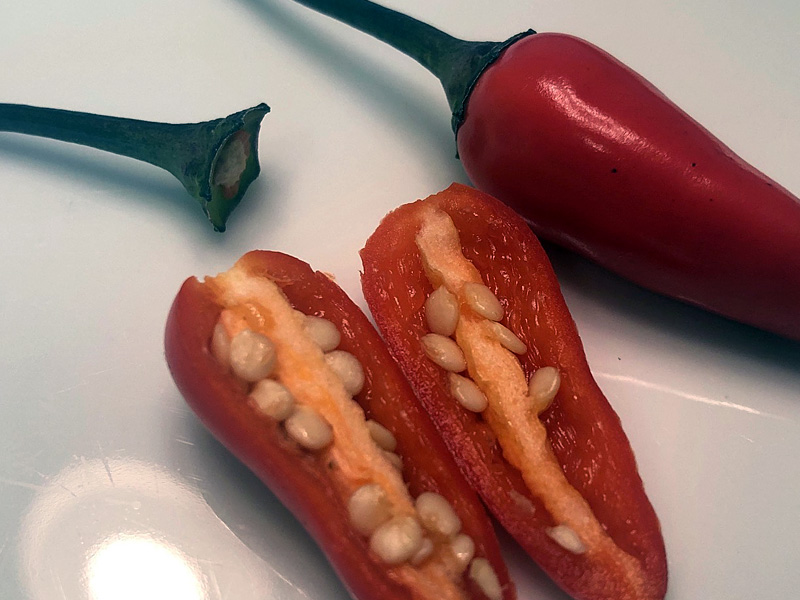Blue Christmas Pepper Review
I first spied this ornamental pepper on Pete Stanley’s Youtube channel a few years back in one of his seasonal updates. I was enthralled with the range of colors the Blue Christmas presents during its ripening process and I immediately started my search to find good seed stock. It wasn’t until this past season, however, that I got the opportunity to grow it out.
My plant was in a 13 gallon pot which is perfect for this type of pepper. As far as ornamentals go, Blue Christmas not only looks great and shows off every color of the rainbow, but the fruit it produces are actually pretty decent tasting. Most ornamental peppers are edible, but don’t really present much of a flavor profile – this one does just enough to separate it from the bunch.

As you can see above, the Blue Christmas ripe fruit are fairly small and bullet shaped with smooth, red skin. They only get to this color after going through purples, oranges, some yellows and even a bit of green. It’s definitely a fun plant to watch throughout the season. Once cut open, the fruit are packed with seeds and a vein of placenta that stretches the full length. It reminds me a bit of the Super Chili I grew a couple of season ago.
The aroma is just about non-existent with just a hint of a general “pepper” smell and a touch of grass. The flavor provides a bit more of a range with a quick burst of fruitiness that lasts a second before fading to grassy/vegetal notes. The skin is of medium thickness and has a satisfying crunch as you chew through it.

There is a slight delay before the heat arrives smoothly. The burn peaks at a low-to-moderate level with a soft sting on the tongue – it eventually spreads to encompass the entire mouth. The soft fire rests at the plateau for a bit before slowly fading. This is definitely not going to destroy any tastebuds.
As far as flavor goes, there’s really nothing unique or fully interesting enough to use the Blue Christmas on its own in a sauce. The range of colors that the plant’s fruit present, however, make it a great option to add some seriously playful and interesting additions to a salsa. Seeing purples, oranges and reds altogether makes for a great conversation starter when friends come over and you provide snacks.